Bhinneka Tunggal Ika: History, Purpose, Principles, Functions
The Unitary State of the Republic of Indonesia is a country located in the eastern hemisphere on the Asian continent, precisely southeast Asia.
Indonesia is flanked by two oceans, namely the Pacific Ocean and the Indian Ocean with a tropical climate and an astronomical location of 6o north latitude – 11o south latitude and 95o east longitude – 141o East longitude.
Indonesia is also crossed by two young mountains of the world, namely the Mediterranean in the west and the Pacific Circum Mountains in the east.
It has three different time zones, namely West Indonesia Time (WIB), Central Indonesia Time (WITA), and East Indonesia Time (WIT). It is also listed as the largest archipelagic country in the world with a total area of 1,904,569 KM2.
In addition, Indonesia also has an official identity as a country, including:
- Indonesia Raya as the national anthem.
- The Red and White Flag as the National Flag.
- Garuda bird as a symbol of nationality.
- Bhinneka Tunggal Ika as the national motto.
Table of contents
History of Bhinneka Tunggal Ika
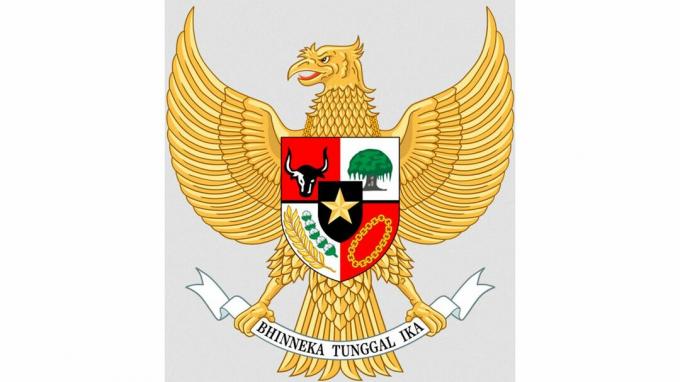
At first, the motto of the Indonesian state was very long, namely Bhinneka Tunggal Ika Tan Hana Dharma Mangrwa.
And then the term Bhinneka Tunggal Ika was known for the first time during the Majapahit era in the era of Wisnuwardhana's leadership.
The formulation of the motto Bhineka Tunggl Ika was carried out by Mpu Tantular in the Sutasoma book.
Basically, the motto is a creative statement in an effort to overcome the diversity of beliefs and religions. This was also done because it was related to the state development efforts of the Majapahit kingdom at that time.
The motto of Bhinneka Tunggal Ika -, provide inspirational values in the Indonesian government system at the time of independence.
This motto is also able to foster a spirit of unity and integrity within the Unitary State of the Republic of Indonesia.
Within us Sutasoma himself, Bhineka Tunggl Ika is more emphasized for differences in beliefs and religious diversity that exists among the people of Majapahit.
However, as the motto of the Unitary State of the Republic of Indonesia, the concept in Bhineka Tunggl Ika does not only concern differences in religion and belief which is the main focus.
However, it is used as a motto in a broader sense, such as differences in ethnicity, nation, culture (customs), different islands, and of course religion and belief towards unity and unity Country.
Talking about the symbol of the Indonesian state, the emblem depicted with Garuda Pancasila is complete with the motto Bhinneka Tunggal Ika on its paws, it is officially designated as one part NKRI.
Namely through Government Regulation Number 66 of 1951 on October 17, 1951 and has been enacted on October 28, 1951 as a State Emblem.
The efforts made during the Majapahit period and the Indonesian government were based on the same interests and views, namely the view regarding the spirit of a sense of unity, unity, and togetherness as the basic capital to uphold Country.
Meanwhile, the slogan which reads "Tan Hana Darma Mangrwa" is used as the motto of the National Defense Institute symbol which means "there is no two-faced truth".
However, after some time, the motto was made to be concise, namely "survive because it is right". The meaning of "there is no two-faced truth" actually means that humans always hold on to and are based on the one truth.
And the motto "Bhinneka Tunggal Ika Tan Hana Darma Mangrwa" is an expression which means the truth of various elements of belief in Majapahit.
In connection with the motto of Bhinneka Tunggal Ika, this was the forerunner of what Singasari did during the Wisnuwardhana the dhinarmeng ring Jajaghu (Jago Temple) which was later perfected during the Majapahit Kingdom with the Jago Temple.
Therefore, the two slogans are known as the result of civilization during the Majapahit Kingdom. And in terms of belief and religion, the people of Majapahit is a pluralistic people.
In addition to the existence of independent religions and beliefs, symptoms of syncretism also appear and are very prominent among Shiva and Buddha as well as the worship of ancestral spirits.
But the beliefs of the natives still persist, even their beliefs have the highest role and become the majority in people's lives.
At that time, the people of Majapahit were divided into several groups. The first is a group of Muslims who came from Abrat and then settled in Majapahit.
The second is a group of Chinese people whose majority come from Canton, Chang-chou, and Fukien who also live in the Majapahit area.
But later, many of these groups converted to Islam and helped spread the religion of Islam.
National Identity Shaper
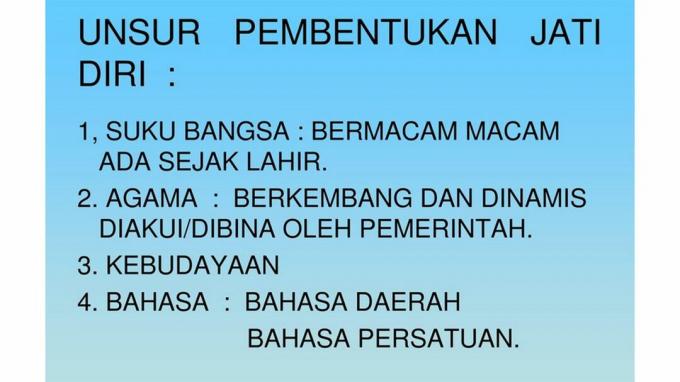
Since the independence of the Republic of Indonesia, the founding figures of the nation have included the word Bhinneka Tunggal Ika as the motto on the national symbol of Garuda Pancasila.
As we know, the sentence is taken from the philosophy of the archipelago since the time of the Majapahit Kingdom which also has been used as the unifying motto of the archipelago, which was pledged by Patih Gajah Mada in the book Sutasoma by Mpu Tantular
recorded in the book as below:
Rwāneka dhātu winuwus wara Buddha Viśwa,
bhinnêki rakwa ring apan kěna parwanosěn,
mangka ng Jinatwa against iwatatwa single,
bhinnêka singular ika tan hana dharmma mangrwa (Pupuh 139:5).
Translate:
It is said that the forms of Buddha and Shiva are different. They really are
different. However, how can we recognize the difference at a glance? Because the truth taught by Buddha and Shiva is actually one.
They are different, but essentially the same. Because there is no ambiguous truth. (Bhinneka Tunggal Ika tan Hana Dharma Mangrwa).
The phrase comes from the Old Javanese language which has been translated into different sentences but still the same. From there, the phrase Bhinneka Tunggal Ika became the identity of the Indonesian nation.
This means that, in ancient times until now, awareness about living together in diversity has grown and become the soul and spirit of the nation in the archipelago.
Munandar (2004:24) in Tjahjopurnomo S.J. mentions that literally the palapa oath contains the meaning of efforts to unite the archipelago.
So, until now the palapa oath has become a reference because it is not only related to one's identity, but also to the glory of the existence of a kingdom. Therefore, the palapa oath becomes an important aspect in the formation of the Indonesian National Identity.
According to the response from Pradipta (2009), the palapa oath is considered important because it contains a sentence that reads "lamun huwus lost to the archipelago isun amukti palapa" which means "if you have mastered the archipelago, I let go fasting/tirakatnya". The archipelago manuscript that supports the ideals is the Pararaton Fiber.
The book has a very harmonious role, because it contains the contents of the text of the Palapa Oath.
Actually, in the Pararaton book there is no oath word, it's just that Ancient Javanese experts traditionally and conventionally refer to it as the Palapa Oath.
more about the text of the Palapa Oath according to the Brandes edition of Pararaton (1897: 36), as follows:
Sira Gajah Mada Patih Amangkubhumi tan ayun amuktia palapa,
sira Gajah Mada: "Even if the archipelago lost, the issue of amukti"
palapa, but lost to the Desert ring, Seran ring, Tanjung Pura, ring
Haru, Pahang ring, Dompo, Balinese ring, Sundanese, Palembang,
Tumasik, samana isun amukti palapa".
Translate:
He Gajah Mada Patih Amangkubumi does not want to let go
fasting (him). He Gajah Mada: If you have defeated
archipelago, I (just) break my fast, if (successfully)
beat the Desert, Seram, Tanjung Pura, Haru, Pahang, Dompo,
Bali, Sunda, Palembang, Tumasik, that's how I am (new)
break fast (me)
Furthermore, it was accompanied by the Youth Pledge which also had an important role in the history of the development of the formation of the Indonesian National Identity.
In 2004 Tjahjopurnomo stated that the Youth Pledge sworn in on October 28, 1928 history is a continuous series of the Palapa Oath, because at its core it is concerned with unity.
And, it was also realized by the youth who made a vow at that time, there was the word history in the word history the decision of the contents of the Second Youth Congress, the Youth Pledge is a very important event for the history of the nation Indonesia.
After the palapa oath, Indonesian youth at that time did not pay attention to their cultural and ethnic background, because they are willing and sincerely feel that they have one nation, namely the nation Indonesia.
It certainly illustrates the wisdom of the youth at that time.
With the proclamation of the youth oath, the archipelago no longer has the idea of ethnicity, islands, provincialism or the idea of federalism.
The Youth Pledge is a unanimous and unified idea of Indonesian nationality, and has brought its people to the realm of independence.
When independence was proclaimed by Soekarno-Hatta on August 17, 1945, the need for National unity and integrity come to the fore with the 1945 Constitution and Pancasila as the basis NKRI.
Since then, the extension of the palapa oath is considered to have a strong role to maintain the continuity of the history of the Indonesian nation as a whole and comprehensive.
If the oath was not there, then Indonesia with its thousands of tribes would be torn apart and could separate itself with an excessive understanding of federalism and regional autonomy.
The idea of the word separating themselves is actually the idea of people who do not know themselves and do not understand how the heroes struggle against the invaders.
They don't even know about Indonesia's "jantraning natural" (round of the times) lessons, which is a new awareness of the level of intelligence, intellectuality, as well as the progress of this nation is built with a pillar that reads Bhinneka Tunggal Ika which has brought the people Indonesia to this day has become a nation that continues to develop, even though they are different (ethnic groups) but remain one (nation) Indonesia).
And strengthened by the Palapa Oath which was followed by the Youth Pledge who had pledged unity and integrity the Indonesian people, as well as the proclamation of independence in the unity and integrity of the Indonesian state which is complete and comprehensive.
This is inseparable from the formation of regional identity as the basis for forming national identity.
Youth Pledge
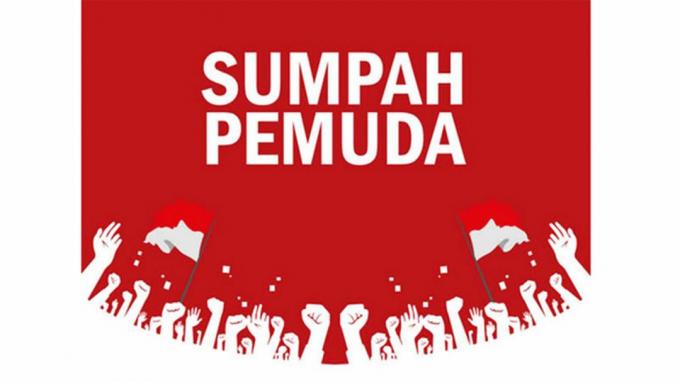
- We, the sons and daughters of Indonesia, acknowledge that we have one blood, the homeland of Indonesia.
- We, the sons and daughters of Indonesia, claim to be one nation, the Indonesian nation.
- We, the sons and daughters of Indonesia, uphold the language of unity, the Indonesian language.
The Function of Bhinneka Tunggal Ika
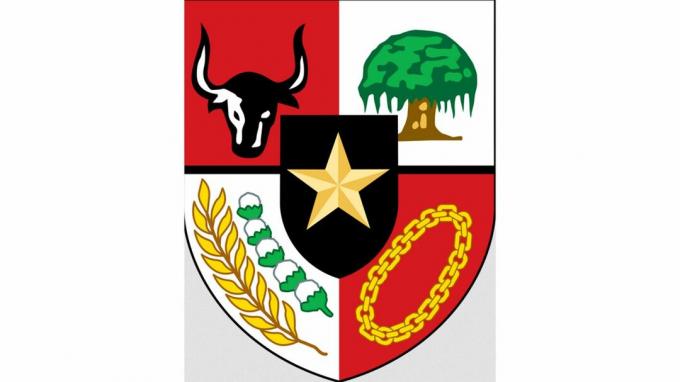
The Indonesian nation has indeed lived in a variety of diversity within it, but disputes regarding diversity between people have never occurred. This of course did not escape the services of the heroes who have brought the Indonesian nation to what it is today.
History records that all the children of the nation who are members of various ethnic groups participated in fighting for the independence of the Indonesian nation by taking their respective roles.
Of course, the heroes are aware of the plurality that exists in the country.
The reality of living in diversity is unavoidable.
Diversity is a reality that already exists in the Indonesian nation, while Unity is a national aspiration.
This motto continues to be the golden bridge that connects to the formation of the identity of a sovereign State and shows its greatness in the eyes of the world.
The concept of Bhinneka Tunggal Ika was later used as the basic motto of the Republic of Indonesia.
Therefore, this motto deserves to be used as a basis for realizing unity and unity within the Indonesian nation.
As the next generation of the nation who has enjoyed the independence of the country easily, should be able to seriously apply the concept of the motto of the Indonesian state in everyday life.
Living in an environment that respects each other without thinking about the mix of ethnic groups, races, religions, languages, and other diversity.
The Principle of Unity in Diversity
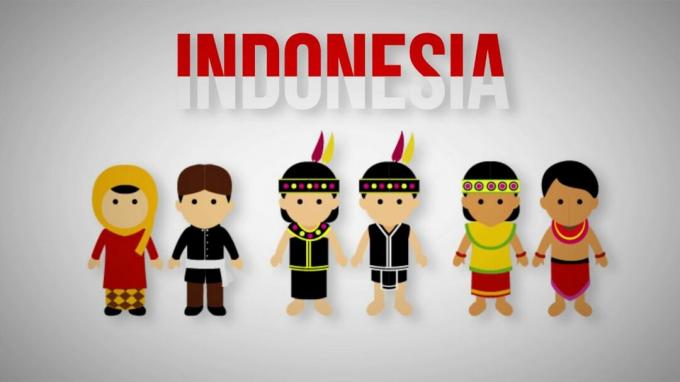
1. Common Denominator
In Indonesia, we already know that there are 5 kinds of religions in it, but this has not become a reproach of one religion to another.
Because in accordance with the principle of the first motto, the differences within the religion must be found by us to find the common denominator or in other words look for the similarities in the differences.
So that the Indonesian people can live in diversity and peace with the similarities in these differences.
Likewise in other aspects, so that all kinds of differences remain united within the framework of the Unitary State of the Republic of Indonesia.
2. Not Sectarian and Inclusive
The purpose of the second principle is that all Indonesian citizens are not allowed considers himself or his group to be the most correct, the greatest, or the most recognized.
Sectarian and inclusive views must be removed from this nation because it will cause a lot of conflicts caused by it jealousy, suspicion, excessive and selfish attitude and do not want to take into account the existence of groups or individuals other.
With Bhinneka Tunggal Ika which has an inclusive nature which means togetherness, so everyone jadi existing groups must foster a sense of brotherhood and but must live side by side with one another each other.
And the majority group is not allowed to impose their will on other groups.
3. Not Formalistic
In a sense, the motto of our country does not only show a rigid and artificial attitude, but instead emphasizes a comprehensive or universal character.
Based on love, respect, trust, and harmony among others. Because, in this way, diversity can be united in the frame of a peaceful Indonesia.
4. Convergent
Convergent in nature, which means that when a country has been hit by problems regarding diversity, it is not to be exaggerated, but to find common ground that can bring all kinds of interests into one.
This can be achieved if there is an attitude of tolerance, mutual trust, harmony, non-sectarian, and inclusive.
Implementation of Bhinneka Tunggal Ika
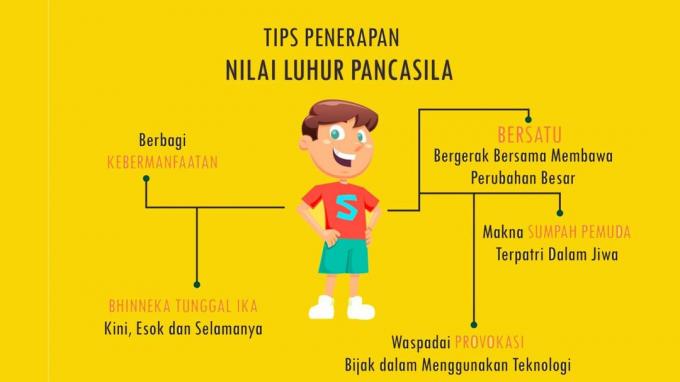
The implementation of Bhinneka Tunggal Ika can be achieved, if the Indonesian people have understood the principle of Bhinneka Tunggal Ika above, for more details, see the information below:
1. Inclusive Behavior
A person must be able to consider himself to be included in a large population, so that the nature of pride or seeing himself as superior to others does not appear.
It also applies to a group. The common interest must always take precedence over just the benefit of personal or group interests over other groups.
With the achievement of consensus, all elements in it will feel satisfied and happy. Because each different group has its own role in the life of the nation and state.
2. Accommodating Prulality
Judging from the diversity that exists in it, Indonesia is a nation with the largest pluralistic level in the world.
This is what makes the Indonesian state respected by other nations in the world, but if this is not managed properly, it is not impossible that there will be disintegration within the nation.
There are many ethnic groups, languages, customs, religions, races and cultures in Indonesia.
Tolerance, compassion, mutual respect are mandatory requirements for all Indonesian people in order to create a peaceful and peaceful society.
3. Not Seeking His Own Win
Differences of opinion are a common thing that we encounter in everyday life.
Moreover, with the implementation of a democratic system which requires the people to express their respective opinions.
Therefore, mutual respect for each other is very important.
From the convergent nature of Bhinneka Tunggal Ika, it must really exist in the life of the nation and state, and keep the divergent nature away for the common good.
4. Deliberation for consensus
The importance of reaching consensus in deliberation is indeed the key to harmony in life in Indonesia.
All differences are sought a middle solution to find the core of common ground so that all kinds of ideas that arise will be accommodated in an agreement.
5. Based on Love and Willing to Sacrifice
In accordance with the guidelines which state that the best of humans are those who are beneficial to other humans, a sense of self-sacrifice must exist and be applied in everyday life.
That feeling will be formed based on a sense of mutual love, love, and love. Stay away from hate because it will only trigger conflict in social life.
